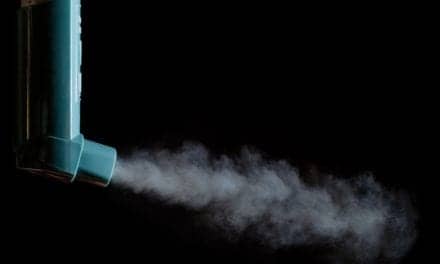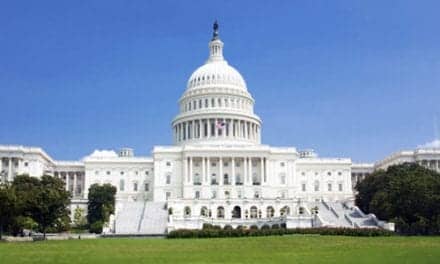The FDA has cleared for marketing the first respirators that can help reduce the user’s exposure to airborne germs during a public health medical emergency, such as an influenza pandemic.
These two filtering facepiece respirators, the 3M Respirator 8612F and 8670F, manufactured by 3M Company (St Paul, Minn), will be available to the general public without a prescription.
The devices are also certified as N95 filtering facepiece respirators by the National Institute for Occupational Safety and Health (NIOSH). NIOSH certifies respirators for use in occupational settings in accordance with an appropriate respiratory protection program.
An N95 filtering facepiece respirator is a face mask that fits tightly over the nose and mouth. It is made of fibrous material that is designed to filter out at least 95% of very small airborne particles. The filter and a proper fit determine the effectiveness of the product.
“While the exact nature and concentration of the biological agent or germ may not be known in a public-health medical emergency, we believe that minimizing exposure will help reduce risk,” said Daniel Schultz, MD, director, FDA Center for Devices and Radiological Health. “These respirators are only one part of a combination of approaches that can be used to help reduce the spread of infection between individuals during such events.”
Many companies make N95 respirators for workplaces, including health care settings. However, the 3M respirators are the first devices to receive FDA clearance for use by the public during public health medical emergencies to reduce exposure to airborne germs.
Under Occupational Safety and Health Administration and other occupational health regulations, respirators used in the workplace must be individually selected for each worker and tested to ensure a proper fit. This kind of fit testing is not generally employed outside the workplace now and would probably not be feasible during a public health medical emergency.
FDA is requiring companies that want to market respirators for use during public-health medical emergencies to assure that they are certified by NIOSH to provide adequate filtration without hampering people’s ability to breathe. In addition, companies must conduct fit-assessment testing, conduct biocompatibility testing to reduce the chance for allergic skin reaction, and provide instructions that will enable wearers to achieve a protective fit and use the devices properly.
3M evaluated fit characteristics in healthy adults to determine that a user could achieve a protective fit following the instructions on the label. They measured how many airborne test particles were able to get inside the respirator through small leaks between the edges of the respirator and the wearer’s face. While individual results varied, all participants tested achieved some reduction in exposure to airborne test particles.
The 3M respirators are sized for adults and might not form a proper fit on children. Anything that comes between the respirator and the face, such as facial hair, can interfere with its fit. Individuals with pre-existing heart or lung disease or other health conditions could have difficulty breathing through a respirator. The devices are for single use. Wearers should not wash, disinfect, reuse, or share their respirator with others. The respirators should be discarded after use.
FDA will soon issue a guidance document outlining its regulatory approach to this new type of device.









